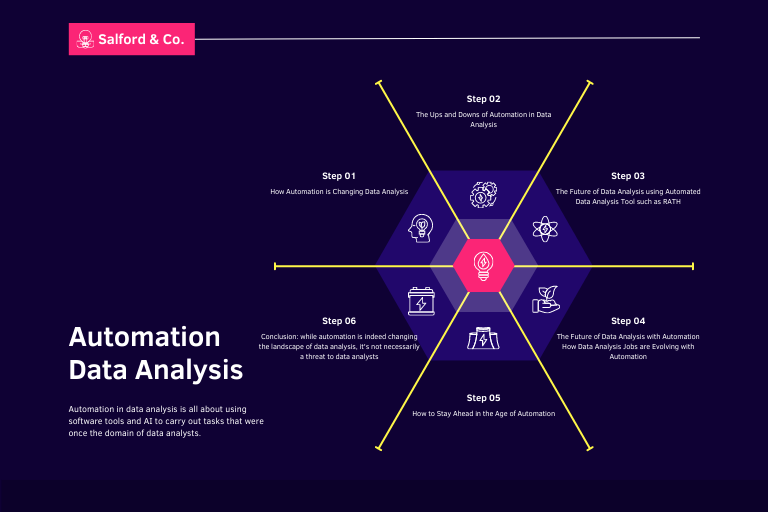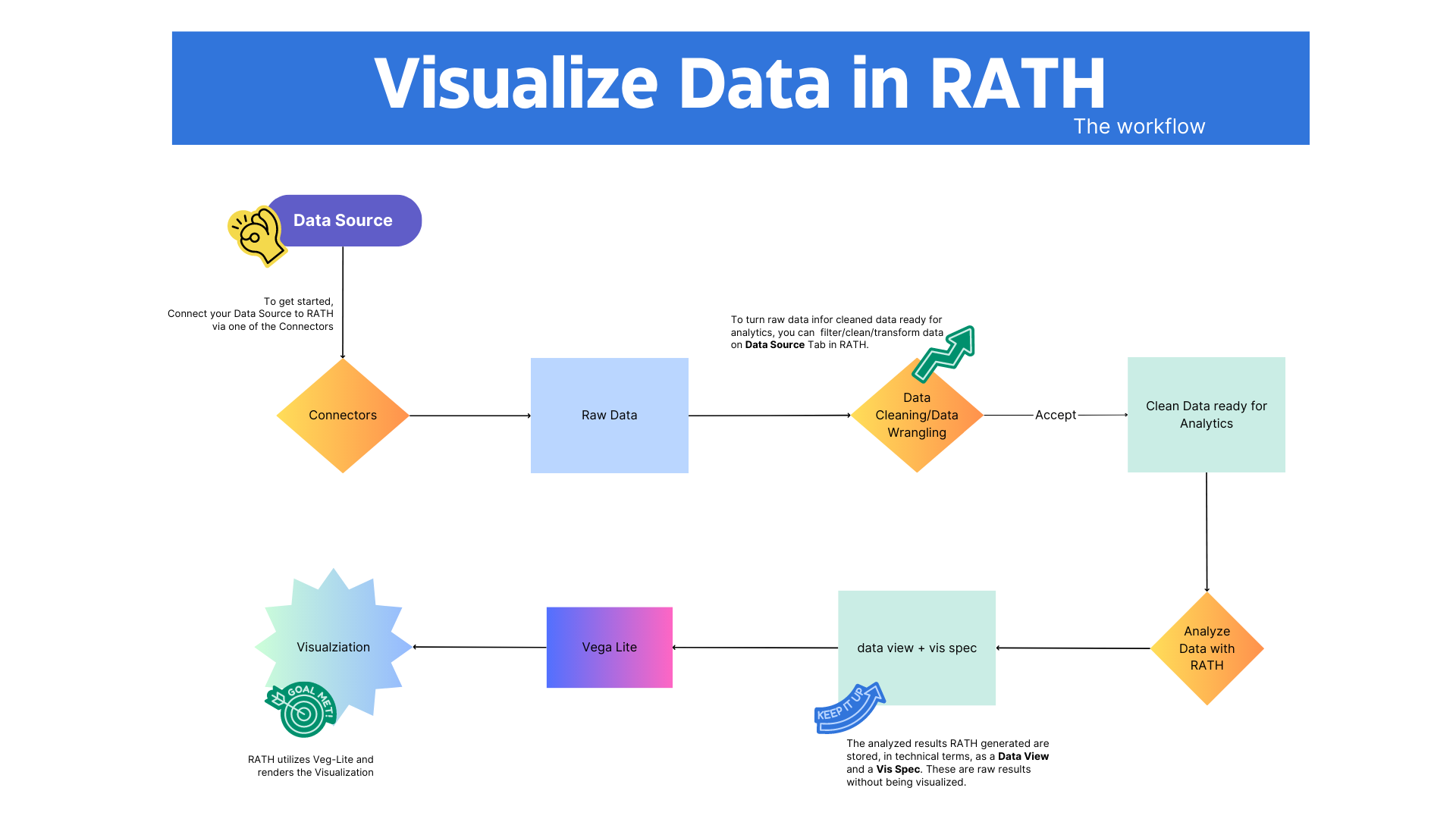Is Automation the Endgame for Data Analysis? Unraveling the Future of Data Science
Updated on
In the digital era, the question, "Will automation destroy data analysis?" is on everyone's lips. With automation and artificial intelligence (AI) making strides, their influence on professions, including data analysis, is hard to ignore. But does it spell doom for data analysis? Or does it mark the beginning of a new chapter where data analysts join forces with automation tools to deliver more precise and efficient outcomes? Let's dive in and find out.
What is Automation in Data Analysis?
Automation in data analysis is all about using software tools and AI to carry out tasks that were once the domain of data analysts. These tasks can range from cleaning up data and preprocessing to complex predictive modeling. Automation is shaking up the world of data analysis, making it more efficient and accurate.

How Automation is Changing Data Analysis
Automation is a game-changer in data analysis. It's a whizz at handling massive amounts of data, slashing the time and effort needed for data preprocessing, and boosting the accuracy of data analysis results. For instance, automation tools can spot and fix errors in data in a jiffy, a task that would take hours to do manually.
Will Automation Replace Data Analysts?
While automation can outperform humans in many tasks, it doesn't mean it'll boot out data analysts. Automation tools lack the knack to understand the context and make strategic decisions based on the data. That's where the expertise of data analysts comes into play. So, instead of replacing data analysts, automation is more likely to reshape their work.
The Limitations of Automation in Data Analysis
Despite its perks, automation in data analysis has its share of limitations. For example, while automation tools are pros at routine tasks, they stumble when it comes to complex tasks that need human intuition and creativity. Plus, automation tools can only work with the data they're fed and can't understand the broader business context like a human analyst can.
The Ups and Downs of Automation in Data Analysis
Like any tech, automation in data analysis has its ups and downs. Understanding these can help businesses and data analysts make informed decisions about using automation.
The Upsides of Using Automation for Data Analysis
Automation brings a host of benefits to the table for data analysis.
- It can handle large volumes of data quickly and accurately, reducing the risk of human error.
- Automation also gives data analysts more time to focus on more complex and strategic tasks.
- Plus, automation can help unearth insights from data that might slip past human analysts.
The Downsides of Using Automation for Data Analysis
Despite its perks, automation also has its downsides.
- One of the key challenges is that while automation tools can handle routine tasks efficiently, they struggle with complex tasks that require human intuition and creativity.
- Moreover, automation tools can only work with the data they're given and can't understand the broader business context like a human analyst can.
The Future of Data Analysis
With automation on the rise, the future of data analysis is looking pretty exciting. But what does it hold for data analysts? Let's find out.
Introducing RATH: Your Solution for Automated Data Analysis
In the world of data analysis, having the right tools can make all the difference. That's where RATH (opens in a new tab) comes in. RATH is a powerful tool designed to simplify and enhance automated data analysis.
What is RATH?
RATH is a data exploration tool that offers automated data insights. It's designed to help you understand your data better, faster, and more efficiently. With RATH, you can generate visual insights, explore data in copilot mode, and even customize your data analysis process.
Here's a quick demo of generating One-Click Automated Data Insights with RATH:
How Does RATH Work?
RATH (opens in a new tab) works by processing your data and generating visual insights automatically. For instance, let's say you're working with a dataset about cars. You can import this dataset into RATH, and it will automatically generate a series of charts and visualizations that provide insights into your data.

You can easily autoamte your Data Analysis Process using AutoPilot, and even save charts to your collections for easy access later. Plus, RATH allows you to export your charts in PNG or SVG format, making it easy to share your insights with others.
Why Choose RATH?
Choosing RATH for your data analysis needs comes with several benefits.
- For starters, it's a great way to get a general idea about new or unexplored datasets.
- If you already have some concrete ideas about your datasets, RATH can assist you in your data exploration journey, functioning as a copilot.
Moreover, RATH offers a tableau-alternative interface where you can drag and drop variables to construct charts manually. You can also explore your data visually with a painter-like interface, where you can directly select, remove, and study your data with drawing tools.
The Future of Data Analysis with Automation
The world of data analysis is evolving at a breakneck pace, with new trends popping up now and then. One such trend is the increasing use of automation in data science. This trend is set to redefine the future of data analysis, making it more efficient and accurate.
With automation in the mix, the future of data analysis is set to be more exciting than ever. Automation is not just about replacing human analysts but enhancing their capabilities. It's about equipping them with the tools they need to analyze data more efficiently and accurately.
How Data Analysis Jobs are Evolving with Automation
As automation becomes more prevalent, data analysis jobs are also evolving. Today, data analysts need to be familiar with various automation tools and understand how to leverage them effectively. They also need to keep up with the latest trends in data analysis and continuously upgrade their skills.
How to Stay Ahead in the Age of Automation
In the age of automation, staying ahead of the curve is crucial for data analysts. But how can they do that? Let's explore.
The Need for Continuous Learning and Adaptation
In the fast-paced world of data analysis, continuous learning and adaptation are key. Data analysts need to stay updated with the latest trends and technologies in the field. They also need to learn how to use new tools and technologies effectively.
The Importance of Understanding and Leveraging Automation Tools
Understanding and leveraging automation tools is crucial for data analysts. These tools can help analysts work more efficiently and accurately. Plus, they can free up time for analysts to focus on more complex and strategic tasks.
The Role of Data Analysis Tools and Software in Adapting to Automation
Data analysis tools and software play a crucial role in helping analysts adapt to automation. These tools can help analysts automate routine tasks, analyze data more efficiently, and uncover insights that might otherwise be missed.
Conclusion
In conclusion, while automation is indeed changing the landscape of data analysis, it's not necessarily a threat to data analysts. Instead, it's an opportunity for data analysts to leverage these tools to enhance their efficiency and accuracy. Tools like RATH are making it easier for data analysts to harness the power of automation and stay ahead of the curve in this ever-evolving field. So, will automation destroy data analysis? The answer is no. Instead, it's reshaping it for the better.
Frequently Asked Questions
Will AI get rid of data analysts?
While AI can automate many tasks traditionally performed by data analysts, it's unlikely to completely replace them. AI lacks the ability to understand context, make strategic decisions, and apply the kind of creative problem-solving that human analysts can. Instead, AI is more likely to change the role of data analysts, allowing them to focus on more complex tasks and strategic decision-making.
Will data analysis become obsolete?
Data analysis is unlikely to become obsolete, even with advancements in AI and automation. The need to understand and interpret data is more critical than ever in our data-driven world. While the tools and methods used in data analysis may evolve, the fundamental need for data analysis will remain.
Will AI disrupt data science?
AI is already disrupting data science by automating many routine tasks and enabling more complex analyses. However, this doesn't mean that data scientists will become obsolete. Instead, their role is likely to evolve, with a greater focus on interpreting AI outputs, formulating strategic insights, and leveraging AI tools effectively.
What is the future of data analysis?
The future of data analysis is likely to be characterized by increased automation and the use of AI tools. However, human analysts will still play a crucial role in interpreting data, making strategic decisions, and applying creative problem-solving. The future will likely see data analysts working hand-in-hand with AI, leveraging the strengths of both to drive decision-making and strategic insights.
